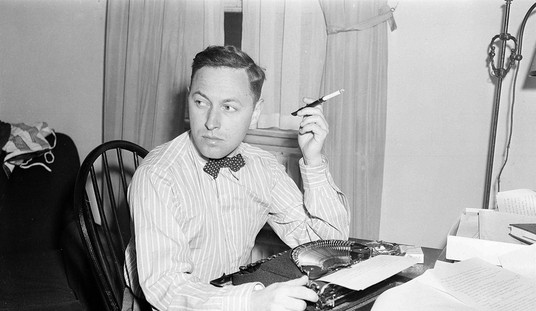There comes a moment in every adult life when the curtain pulls back and the uncomfortable truth reveals itself: You are not the star of the show. You are, at best, a recurring guest star — and, more often, the equivalent of “Cashier #2” in someone else’s plotline.
That realization hit me the day I looked around and thought, “Wait. Every single person here thinks they’re the main character.” The rude driver on the highway, the barista who spells my name wrong, even the guy in line at the DMV — each one is the protagonist of a sprawling epic in which I appear for exactly three seconds and then vanish.
It’s humbling, sure, but also freeing. Because being the side character means the pressure is off. You don’t have to carry their story arc. You don’t have to deliver the moral of the tale. Sometimes your entire role is to say “That’ll be $7.95” or to bump into them with a grocery cart at a pivotal emotional moment.
And isn’t that a relief?
Back in the 1940s, mythologist Joseph Campbell published “The Hero with a Thousand Faces,” an attempt to map out the universal “hero’s journey” — you know, the epic template where the protagonist leaves home, faces monsters, finds wisdom, and comes back changed. Hollywood screenwriters worship it. College freshmen endure it. Campbell’s point was that we are all, in some sense, the hero of our own myth.
My point is the opposite: Most of the time, we’re bit players in everyone else’s myth. Which means, if Campbell is right, there’s a whole second book waiting to be written: “The Side Character’s Journey.”
The Myth of Center Stage
Our culture is obsessed with being the main character. Instagram influencers literally tell you to cultivate “main character energy,” which mostly seems to involve dramatic coffee sipping and staring wistfully out of train windows. The self-help industry urges us to “take control of our story” as though we’re all destined to star in Marvel’s next billion-dollar franchise. Even the workplace has gotten in on it — every PowerPoint deck now promises you a “hero’s journey” through the exciting world of quarterly sales metrics.
But here’s the awkward truth: You are not the main character in most of the stories that matter to other people. To the barista, you are not Frodo; you are “Customer Who Ordered the Complicated Drink Right Before My Break.” To your co-workers, you’re not Neo; you’re “Person Who Sends Emails at 4:59 p.m.”
And that’s okay. In fact, it’s healthy. Imagine if everyone you encountered really did treat you like the Chosen One whose destiny they must advance. The world would be unlivable — every traffic jam a battle sequence, every dentist appointment a test of cosmic endurance. Life works precisely because most of us are side characters in each other’s daily epics, keeping things moving along.
The myth of center stage makes for good marketing, but lousy anthropology. The truth is far stranger, funnier, and — dare I say — more freeing: we are a rotating cast of mentors, obstacles, allies, and extras, constantly walking on and off each other’s stages.
The Side Character Archetypes
Joseph Campbell catalogued the archetypes of the Hero’s Journey — the Mentor, the Threshold Guardian, the Shadow, and so on. But for those of us destined for the supporting cast, the categories look a little different. Here are a few you may recognize from your own daily cameos:
- The Mentor (Usually Accidental). You drop a piece of advice in passing — “Don’t microwave fish at work” — and suddenly it becomes someone else’s guiding principle. Years later, they’ll remember you as the wise sage who set them on the right path. You’ll have no memory of the conversation.
- The Comic Relief. Your only job was to make the hero laugh on their worst day. You weren’t trying to; you just tripped over the copier cord or made an unintentional pun. Somewhere out there, you are remembered as “the person who made it bearable.”
- The Threshold Guardian. Bureaucrats, customer service reps, DMV clerks — you are the test the hero must overcome to continue their quest. It’s not personal; you’re just the dragon standing between them and the coveted license renewal.
- The Loyal Friend. A role most of us underestimate. Heroes may slay dragons, but they rarely slay loneliness. Sometimes, the background character who simply shows up is the one who keeps the plot from collapsing.
- Villager #3. Most of the time, this is us. Anonymous, unnoticed, woven into the backdrop of someone else’s tale. But even Villager #3 matters — because what’s a story without the crowd, the passerby, the witness?
The truth is, we rotate through these roles constantly. To one person today, you were a Mentor. To another, an Obstacle. To dozens, just Villager #3. That’s not a failure — it’s the fabric of human life.
The Responsibility of Side Characters
Just because you’re not the star doesn’t mean you don’t matter. Quite the opposite. Heroes only look like they carry the whole story; in reality, they’re stitched together by the small roles of everyone around them.
Think of the Lord of the Rings films. Gandalf tells Frodo, “Even the smallest person can change the course of the future.” That line is usually taken to mean “hobbits are more important than they look.” But it applies even more broadly: every side character matters. Without Barliman Butterbur passing along a letter, the quest stalls. Without Éowyn — technically a “supporting character” — the Witch-king of Angmar keeps right on conquering. Without a random Gondorian soldier blowing a horn, Minas Tirith doesn’t rally.
Real life works the same way. To you, it may feel like you’re just bagging groceries or making a dumb joke at the wrong time. To someone else, it might be the moment that shifted their story. A smile, a harsh word, a bit of grace, a bit of cruelty — these side-character choices become the hidden hinge-points of other people’s epics.
The burden is lighter than being the protagonist — you don’t have to carry the whole plot — but it’s no less meaningful. The role of the side character is to nudge, brighten, complicate, or steady someone else’s journey in ways you may never realize.
So yes, Frodo gets the credit for destroying the Ring. But the truth is, his story was written in the margins by a thousand side characters, most of whom never knew they’d changed the world.
The Comedy and the Freedom
There’s a great cosmic joke tucked inside this whole business of being a side character: it’s actually hilarious.
Think about it. You agonize over what to say in a meeting, convinced everyone will remember your awkward phrasing forever — only to realize you were nothing more than “Random Guy in Conference Room” in someone else’s Monday subplot. The weight you felt was an illusion; you were a background extra in their episode, forgotten as soon as the credits rolled.
And that’s the freedom. Being the side character means you don’t have to be flawless or profound every moment. You don’t have to deliver the climactic speech. You don’t have to save the day. Most of the time, your entire responsibility is to play your bit part — cheerfully, grumpily, accidentally — and then walk offstage.
Sometimes you’re the comic relief, providing levity when things get too heavy. Sometimes you’re the minor obstacle, the bureaucrat stamping forms in triplicate. Sometimes you’re just Villager #3 holding a basket of apples in the background. All of it matters, but none of it requires you to carry the whole show.
The myth of being the main character is exhausting. The comedy of being the side character is liberating. You get to step in, do your bit, and let the plot carry on without you. And that — ironically — may be the most heroic thing of all.
The Paradox
Here’s the paradox: the better you play your side-character roles, the stronger your own hero’s arc becomes.
Think about it — your journey is shaped not by how loudly you insist on center stage, but by how well you navigate other people’s stages. You’re the mentor in one life, the comic relief in another, the obstacle in a third. Each time you step into those roles, you’re also developing the humility, wisdom, and humor that shape your own plot.
In other words: Frodo wouldn’t have made it without Sam, but Sam wouldn’t have become Sam without Frodo. Every hero is built by side characters, and every side character is built by heroes. That’s the ecology of narrative: none of us do this alone.
Closing / Call to Wonder
So here’s the shift: stop worrying about being the main character all the time. You already are — in your own story. But in everyone else’s? You’re the stranger who held the door, the coworker who cracked a joke, the bureaucrat who demanded the right form, the friend who showed up.
And that’s not small. That’s everything.
Joseph Campbell gave us “The Hero with a Thousand Faces.” But what he missed — what life insists on reminding us — is that we are also a thousand faces in a thousand other hero stories. Each one of us is at once protagonist and supporting cast, hero and Villager #3.
So play your role well. Deliver your lines with kindness, humor, or gravitas when the script calls for it. Because you never know when your “minor” scene will be the moment that turns someone else’s epic.
After all, even the smallest side character can change the world.
Life isn’t a Marvel movie — you’re not the main character. Most days, you’re Villager #3 holding the basket of apples. And that’s okay. In fact, it’s hilarious. The myth of center stage is exhausting; the comedy of being a side character is liberating.
At PJ Media, we tell the stories that remind you of both truths: sometimes you’re Frodo, sometimes you’re “Guy at DMV Window #2.” Either way, it matters.
Join today and get 60% off with the promo code FIGHT — because even side characters need the real script.









Join the conversation as a VIP Member